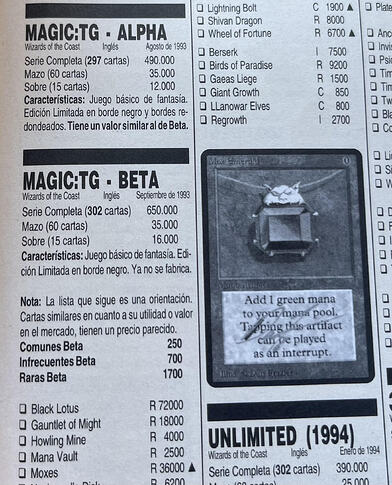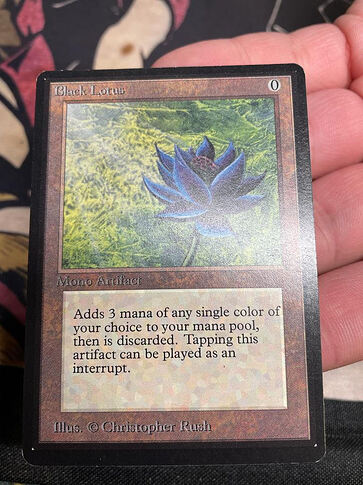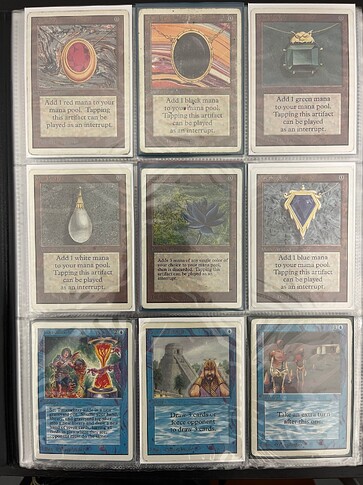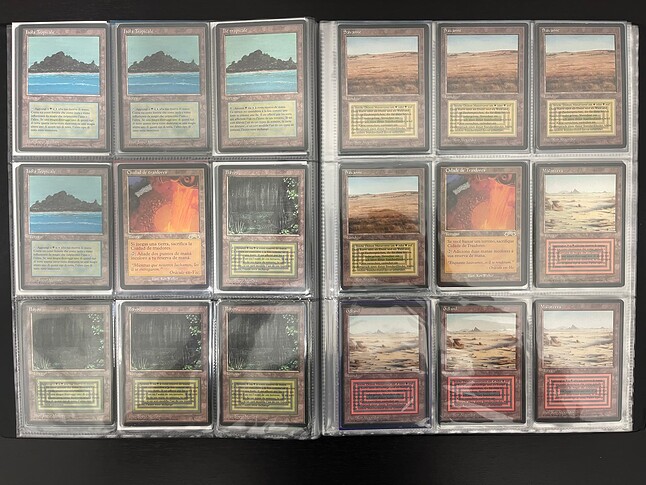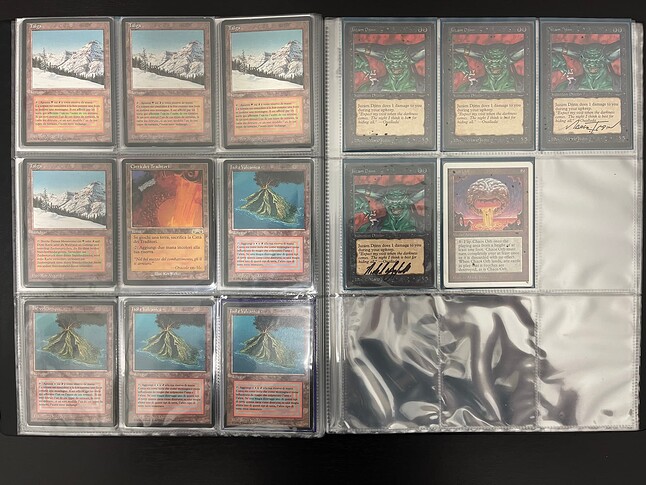I have always been a player of Magic: The Gathering. I played my first games when I was around 6 years old, and I still play to this day at the age of 34.
Magic has brought me many joys and memorable moments. Some of my closest friendships come from this world, and I remain highly active in the community.
However, a few weeks ago, I made the decision to sell the majority of my collection (while keeping the two decks I play with).
It was a valuable collection, both in terms of its monetary worth and emotional attachment, and I debated internally for days before being able to make the decision to sell it.
Today, my intention is not only to show you what I sold but, above all, to share the thought process I went through to justify my decision.
Furthermore, as always, I will conclude by relating everything to Pokemon TCG and explaining why I wouldn’t have made the same decision if it were a collection of that particular card game.
Let me start by giving you a bit of context about the current state of Magic: The Gathering, so you can better understand the situation.
Magic Players and the Value of Modern Cards
Magic: The Gathering is a game played by millions of people worldwide, whether in official formats or those promoted by the community itself.
However, the vast majority of people do not collect Magic just for the sake of collecting. Most of the community PLAYS Magic, and if they accumulate cards, it’s usually because they use them in their decks or plan to do so at some point.
Modern cards gain value in the market because they are played in the current metagame. If a card becomes less useful (which happens frequently), its market value plummets. It gets sold (often at a loss) and is replaced by cards being played at that time.
Cards are constantly reprinted or suffer from power creep (better cards are introduced, rendering them unplayable). Price trends for modern cards always lean towards a decline in the long run.
Are there cards that do maintain their economic value or appreciate in value?
We can distinguish between two major periods in Magic: pre-2003 and post-2003.
Post-2003 cards would fall within the description I just provided.
On the other hand, pre-2003 sets are played in multiple unofficial formats created by the community. These formats are static, so the majority of the cards played in them do not fluctuate much in price.
Someone who has a pool of cards that allows them to play two or three decks in formats like Old School or Premodern could dispose of them for practically the same price they acquired them for, as long as the community continues to play those formats.
Now, within this era of Magic, there are cards with a distinctive feature…
The Reserved List
The Reserved List is a group of 572 cards that will never be reprinted.
Within this group, there are cards with prices on the secondary market ranging from negligible (cents) to astronomical (hundreds of thousands depending on condition).
Their value can be determined by their rarity, condition, playability, historical importance within the hobby, or a combination of these factors, which obviously determine their demand and therefore their price.
For those who collect Magic with the intention of preserving the economic value of their collection or gaining some profit over the years, it only makes sense to do so with cards from the Reserved List.
This list includes iconic cards such as the Power 9, with Black Lotus as its flagship, the dual lands, or legendary cards like Library of Alexandria and Juzam Djinn.
I still have old magazines where the prices of all the cards were marked… This photo is from the oldest one I have:
It says 72.000 Spanish pesetas, around 432€.
That same Black Lotus now hovers around 70.000€ in NM.
What did I have?
I will provide the photos at the end of the article, but now I will list them for you. It was a compact yet valuable collection. Out of a total of 59 cards:
- Power 9 (P9) from Unlimited (Black Lotus, Mox Jet, Mox Sapphire, Mox Pearl, Mox Ruby, Mox Emerald, Timetwister, Ancestral Recall, Time Walk).
- The 40 FBB Dual Lands.
- Library of Alexandria.
- 4 City of Traitors.
- 4 Juzam Djinn.
- Unlimited Chaos Orb.
The valuation at the time of sale, based on condition, was around 65,000€.
Why did I sell it?
- I stopped enjoying them.
To begin with, let me tell you what triggered even considering selling them.
As I mentioned before, in Magic, we usually “collect” or have a pool of cards that we intend to use while playing.
The fact that I hadn’t played the formats in which these cards were legal for 4 years and had no intention of doing so in the short or medium term (never say never…), put these cards in a position where I was keeping them solely for their potential future appreciation and a certain emotional attachment to them.
This led them to be stored in a safe deposit box, in a city several hours away from where I live…
So, from that moment on, I stopped enjoying them because I wasn’t playing with them… and I couldn’t even find the time to take them out and delight in them (an essential aspect of collecting, which I discuss in the Guide to Collecting Pokemon TCG).
Ceasing to enjoy them was the trigger for considering their sale. Now, I had to think about whether it was worth keeping them as an “investment.”
- Was it an appropriate collection for long-term investment?
As I discussed in the article “Are collectibles, like Pokémon TCG, good investments?”, and categorizing Magic: The Gathering still in its speculative stage (with doubts about how it will transition to its established collectible stage), I would consider “good investment” cards in the long term (5+ years) to be those that fall within the top 1-3% of the hobby.
The criteria to qualify for that top tier revolve around rarity, condition, and demand/liquidity. It is necessary to excel in all three aspects simultaneously.
Although at first glance, many might say that my collection would qualify to be in that top tier, I do not believe it was within that 1-3%. Generally, it did not have a premium condition, which would already disqualify it.
Perhaps the Unlimited Black Lotus could fit in there, if it had been in near mint (NM) or PSA/BGS 8.5+ condition. Maybe the rest of the Power Nine (P9) as well…
But the majority of that top tier within the hobby would be occupied by cards like the Alpha and Beta Power Nine in good condition.
And that was one of my considerations… If I wanted to preserve a MTG collection as an investment, I would exchange my collection for 1-2 more exclusive pieces.
It would have allowed me to acquire a PSA 9 Unlimited Black Lotus, with some funds remaining. Alternatively, I could have chosen to keep this piece, which I had the pleasure of brokering, and which sold for €67,000 a few months ago.
- Opportunity Cost
Having decided that those cards would not be the ones I wanted in my long-term investment portfolio, I had to determine whether to exchange them for something within that top 1-3% or allocate the money elsewhere.
Opportunity cost refers to what you forego by choosing one option over another. Where would my money perform better?
If you ever find yourself in a similar situation, make sure that the return you will obtain is higher than what you would get from an indexed fund that weights the most powerful companies in the world (an average annual return close to 8% if you are investing for the long term).
I chose to exit Magic and allocate the capital elsewhere. Among other reasons, after dedicating time to think through this whole process, I realized what Magic The Gathering is currently lacking in order to ensure the game’s longevity over the years…
- Generational Shift
The average age of people who play Magic has been steadily increasing for years.
Ensuring the existence of a hobby over the decades relies on generational shift.
Unfortunately, I don’t see this happening in Magic.
I no longer see kids playing Magic in schoolyards like I used to. And it’s very unlikely to happen again, considering the multitude of games and pastimes (especially digital ones) that today’s youth have at their disposal, posing stiff competition.
When many Millennials and Gen Zs stop playing, the game may ultimately come to an end.
Don’t get me wrong. For this to happen, it could easily take another 20 or 30 years. Many of us who play Magic, especially unofficial formats, envision ourselves playing even when we’re over 50. Additionally, the influx of new players will not suddenly come to a halt.
However, it’s a hobby that I don’t believe will be played when my grandchildren are old enough to do so.
- The Offer and the Benefit
Lastly, the offer I received for the lot was the best I could have expected, as well as the payment conditions.
It came from a close friend of mine who, based on my market experience, nobody could have matched. Alongside the fact that the profit from the collection was substantial, after having it in my possession for about 5 years…
One must know when it’s a good time to sell. And I believe it was.
Conclusion
In summary, I decided to sell my valuable collection of Magic The Gathering for several reasons. I stopped playing and enjoying those cards, they didn’t meet my long-term investment criteria, and I see a more promising future in Pokémon TCG. Additionally, the offer I received for the lot was favorable, which led me to make the decision to sell.
Now I focus on building and enjoying my Pokémon TCG collection, while making new friendships in its incredible community.
Remember, each person should evaluate their own circumstances and make decisions based on their interests, objectives, and criteria. The most important thing is to find joy in every card we acquire and enjoy our passion.
Enjoy collecting!
Cross
P.S.: This are the collection pics (black dots in the Juzam’s page and some cards belong to the sleeves) :
